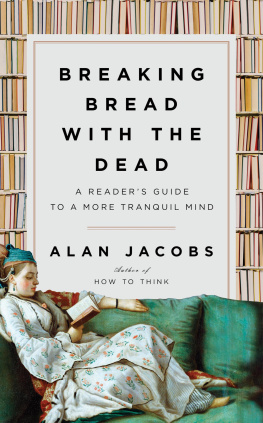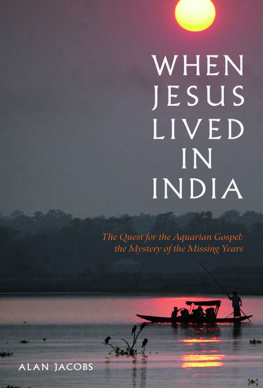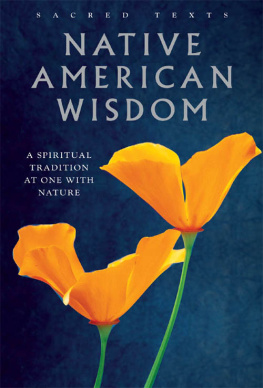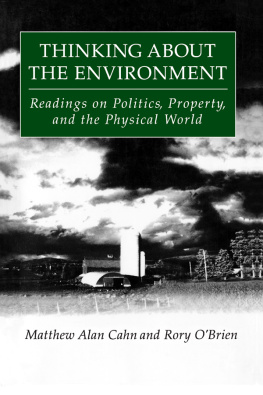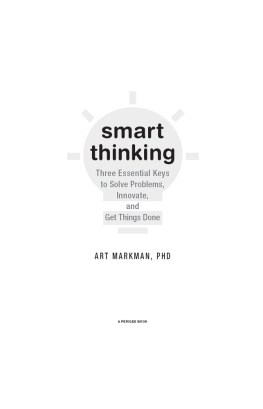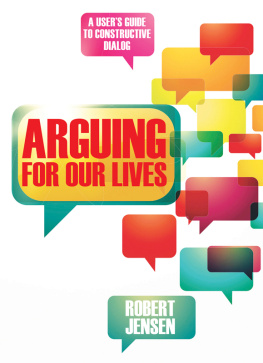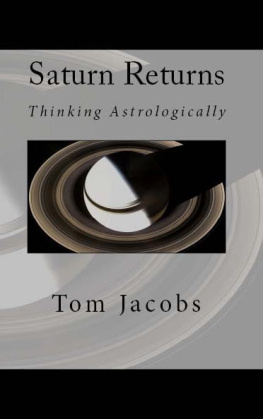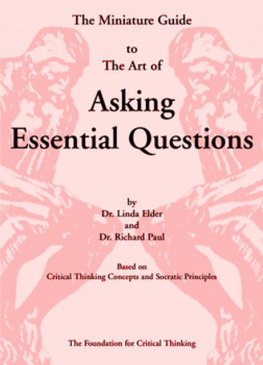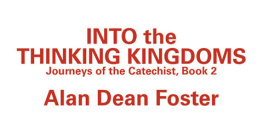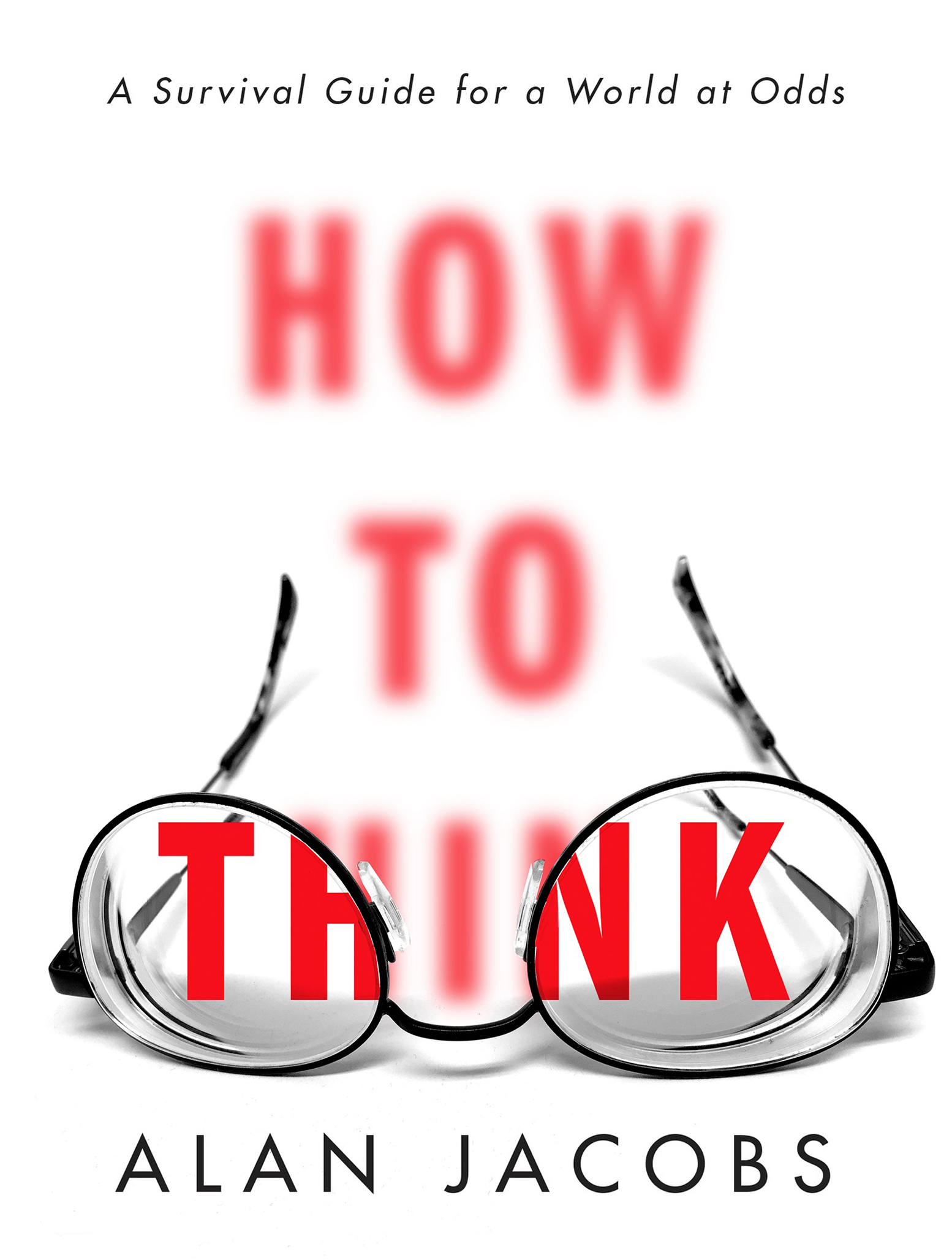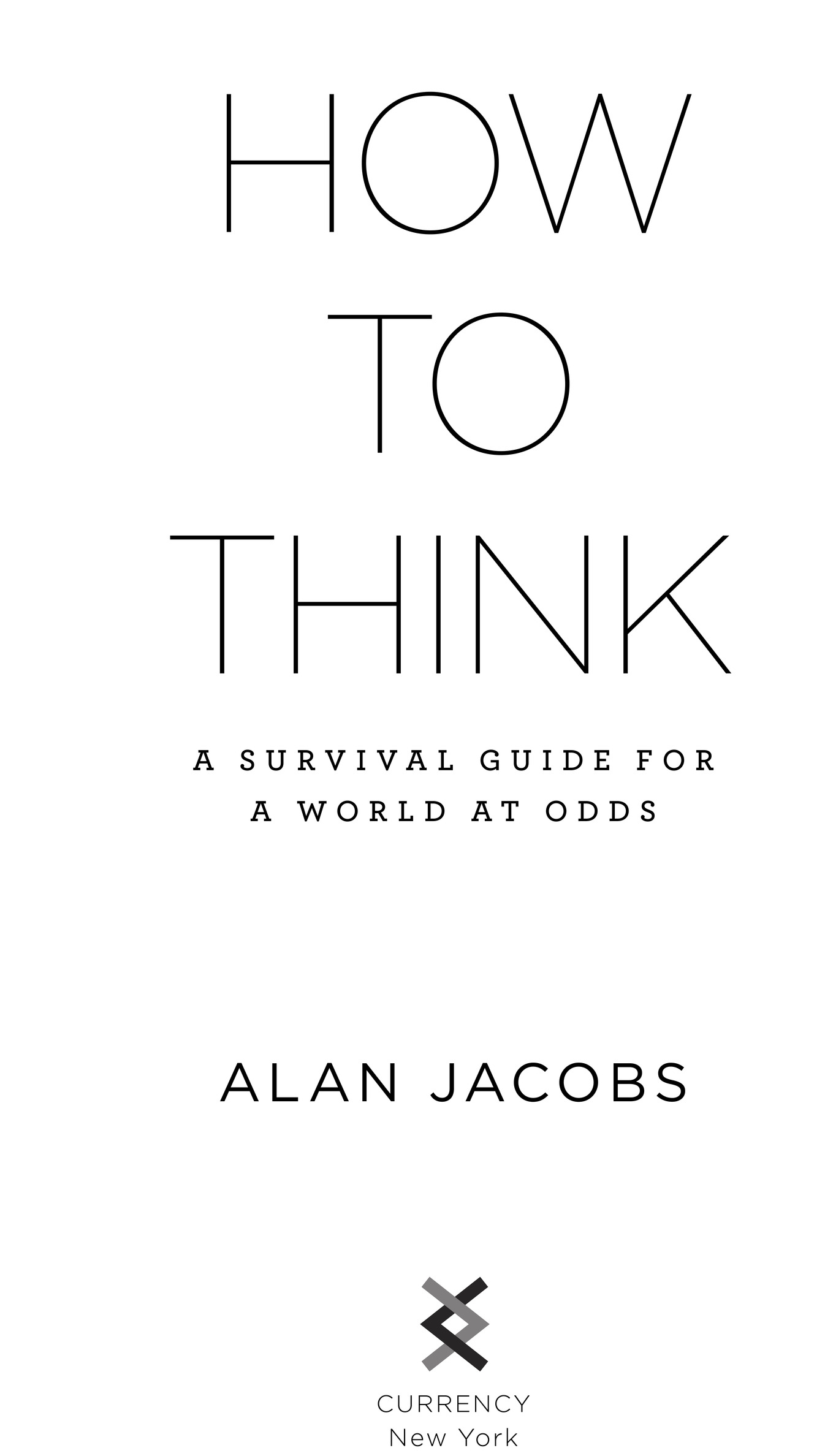Alan Jacobs - How to Think: A Survival Guide for a World at Odds
Here you can read online Alan Jacobs - How to Think: A Survival Guide for a World at Odds full text of the book (entire story) in english for free. Download pdf and epub, get meaning, cover and reviews about this ebook. year: 2017, publisher: Currency, genre: Religion. Description of the work, (preface) as well as reviews are available. Best literature library LitArk.com created for fans of good reading and offers a wide selection of genres:
Romance novel
Science fiction
Adventure
Detective
Science
History
Home and family
Prose
Art
Politics
Computer
Non-fiction
Religion
Business
Children
Humor
Choose a favorite category and find really read worthwhile books. Enjoy immersion in the world of imagination, feel the emotions of the characters or learn something new for yourself, make an fascinating discovery.

- Book:How to Think: A Survival Guide for a World at Odds
- Author:
- Publisher:Currency
- Genre:
- Year:2017
- Rating:3 / 5
- Favourites:Add to favourites
- Your mark:
How to Think: A Survival Guide for a World at Odds: summary, description and annotation
We offer to read an annotation, description, summary or preface (depends on what the author of the book "How to Think: A Survival Guide for a World at Odds" wrote himself). If you haven't found the necessary information about the book — write in the comments, we will try to find it.
How to Think is a contrarian treatise on why were not as good at thinking as we assumebut how recovering this lost art can rescue our inner lives from the chaos of modern life.
As a celebrated cultural critic and a writer for national publications like The Atlantic and Harpers, Alan Jacobs has spent his adult life belonging to communities that often clash in Americas culture wars. And in his years of confronting the big issues that divide uspolitical, social, religiousJacobs has learned that many of our fiercest disputes occur not because were doomed to be divided, but because the people involved simply arent thinking.
Most of us dont want to think. Thinking is trouble. Thinking can force us out of familiar, comforting habits, and it can complicate our relationships with like-minded friends. Finally, thinking is slow, and thats a problem when our habits of consuming information (mostly online) leave us lost in the spin cycle of social media, partisan bickering, and confirmation bias.
In this smart, endlessly entertaining book, Jacobs diagnoses the many forces that act on us to prevent thinkingforces that have only worsened in the age of Twitter, alternative facts, and information overloadand he also dispels the many myths we hold about what it means to think well. (For example: Its impossible to think for yourself.)
Drawing on sources as far-flung as novelist Marilynne Robinson, basketball legend Wilt Chamberlain, British philosopher John Stuart Mill, and Christian theologian C.S. Lewis, Jacobs digs into the nuts and bolts of the cognitive process, offering hope that each of us can reclaim our mental lives from the impediments that plague us all. Because if we can learn to think together, maybe we can learn to live together, too.
Alan Jacobs: author's other books
Who wrote How to Think: A Survival Guide for a World at Odds? Find out the surname, the name of the author of the book and a list of all author's works by series.


